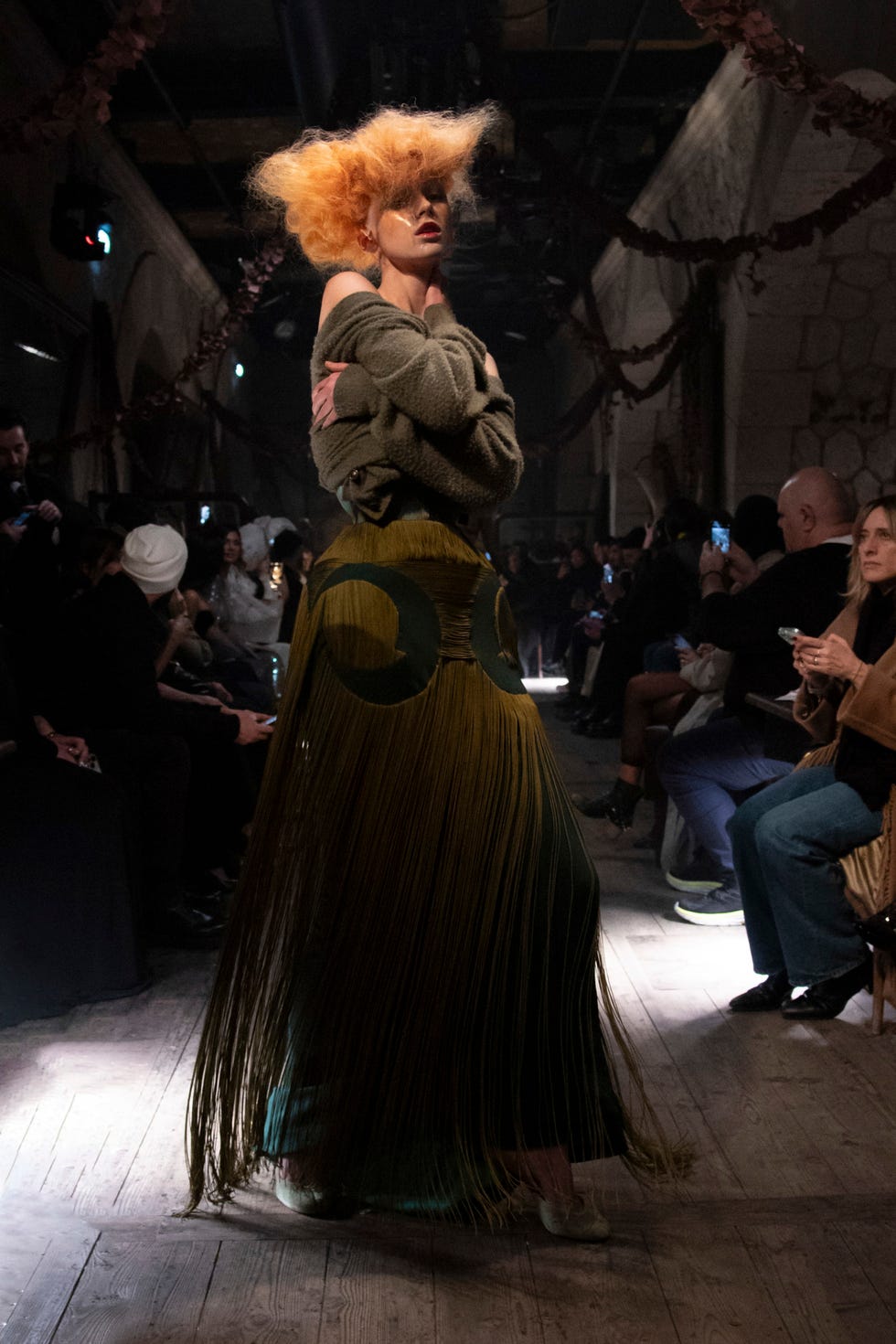As the first full moon of the year reflected on the rain-soaked pavements of Paris, the scene was set for one of the most memorable fashion moments of the decade. was about to close the season with an era-defining Maison Margiela Artisanal show. It not only demonstrated his sublime talent but also transcended catwalk conventions, taking the idea of a fashion show as far into the realm of performance art as possible.
More than a collection, it was a manifesto for the importance of creativity and self-expression, coming as it did in a season where real clothes and straightforward presentations took precedence over soaring fantasy. A secret doorway under the Pont Alexandre III bridge became a portal to Galliano’s alternative universe: a seedy, turn-of-the-century Parisian speakeasy strewn with the detritus of a riotous party. A cast of characters that evoked a gas-lit era of bygone bohemia and deadly decadence strutted, scuttled, preened and posed their way through the venue under the genius movement direction of Pat Boguslawski.

Models wore extreme hourglass silhouettes with padded hips, their waists acutely cinched by corsets, with merkins (pubic wigs) clearly visible beneath some sheer, bias-cut gowns. Their faces were painted by Pat McGrath to look like , with hair piled into a fin de siècle frizz on top of their heads by Duffy; described it as a Toulouse-Lautrec painting come to life. Galliano had unleashed something – an energy so pure in its creative expression, so .
















